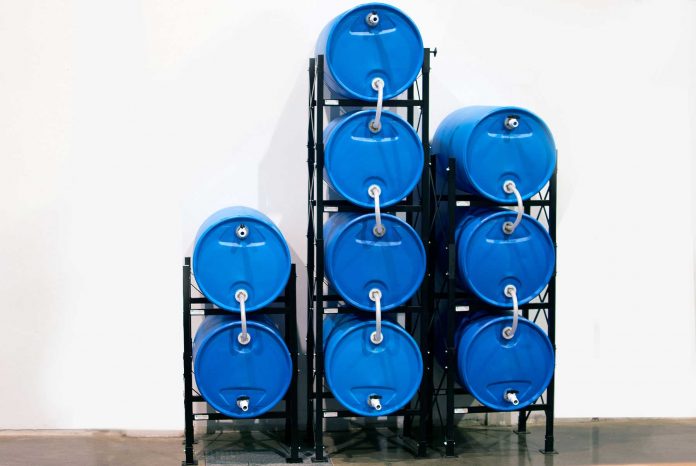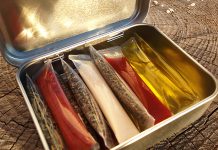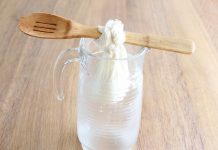What happens when you put enough water back to get your family through an emergency and it’s been sitting for a while? Was that aged, processed water still safe to drink? Can you trust that your stored water won’t affect your family if you need to use it? Let’s take a look.
A Multi-Faceted Question
The first thing you should know is that even if it has not been opened or used in any way, it is absolutely feasible for your water storage to become contaminated.
There are several variables that may decide whether your old water storage is safe to use. Several variables will have to be taken into account based on your water storage situation and ultimately, the only way to determine for sure whether your old water storage is safe is by testing it or purifying it again.
Here are some factors which could affect the safety of the water:
- What it’s stored in – If you buy insulated, store-bought water bottles, they will possibly remain uncontaminated longer than if you fill your own water storage containers. Containers designed for water storage that have seals intact are more likely than other food grade containers, containers with faulty seals or reused containers to keep your water smelling fresh.
- Temperature where it’s stored – Warm temperatures will promote bacterial development, and water stored in warmer areas of your home will likely develop unhealthy bacterial rates faster than water stored in cooler sections of your home. Keep your water kept at temperatures below 65 °F.
- Exposure to light where it’s stored – Light can also contribute to excessive growth of the microbial. For best results, keep your water in the dark.
- How the water was purified before storage – Although most bottled water is really just tap water, it has undergone additional filtration which will take care of any bacteria that remain in the tap water. This is what soda producers do to create a consistent taste and a clean product. If you store your own water, the purification system will make a major difference on how it holds to the test of time.
Ensuring Safety


Buying commercially bottled water is the easiest way to guarantee your water storage is safe. Through statute, this water is expected to be free of harmful pollutants, and so long as the seal remains intact it should stay so. After a while, though, even commercially bottled water can take on a taste from the area where it is stored, but it should still be good to drink.
When you use food grade blue number 2 plastic water bottles designed to store water, you can help ensure that your water stays nice by ensuring that the container is properly washed and sanitized inside and outside. Always ensure the bottles are sealed properly. You can test the seal by turning on its side a full bottle and waiting for some days to watch for leaks. Fill in thoroughly at refill stations located in your local store or filter or boil tap water to ensure that the water is free of contaminants.
Related: Did You Know Why Bottled Water Has An Expiration Date?
Generally speaking, other storage methods, like old jars or milk cartons, are not a safe way to store water long-term. Avoid using these containers to help ensure your water’s safety.
Testing Water for Safety
When you’re worried about the health of your stored water you can buy water quality test kits. Prices vary from a couple of dollars to more than a hundred million. These tests may include test strips, adding water to prepared petri dishes and waiting for bacteria to grow, or mediums that detect bacteria that change color.
Other Tips for Storing Water Longer
One of the best ways of ensuring that your water storage stays fine is to rotate it often. It’s recommended you rotate every six months, but you can count on it to be safe for a considerably longer time. If you label each container with the date it was filled in, it will help you rotate appropriately.
Keep the water in a cool, dark area of your home. Avoid storing water close to chemicals, or other contaminants. Rotate water which is more frequently kept in less than ideal areas to help ensure freshness.
Related: Survival Uses for Plastic Bottles
If you choose to fill up bottles at home, be sure to use a food-safe hose to get the water into the containers. Garden hoses often contain lead and large amounts of contaminants. A water preservative concentrate can be used to help preserve the flavor in your bottled water. To keep water fresh longer, you can also add 8 drops of household bleach to each gallon of water.
If you’re storing in the basement or garage, keep the containers off cement floors. Place them on pallets or other shelving, or simply place cardboard between the floor and your water storage.
If there are any questions about the safety of your water storage method, it might be your responsibility to keep drops on hand for water purification. In an emergency situation, this would discourage the urgent use of potentially polluted water.
Using Stored Water
If your water storage is safe but still doesn’t taste great, you may be able to improve the flavor by oxygenating the water. Just pour the water back and forth between two containers to help bring oxygen back in.
As long as water has been properly stored and was clean to begin, your stored water will remain good for many years. If you have any questions about your water storage plan’s safety, get a test kit now, before you need it to make sure.





















